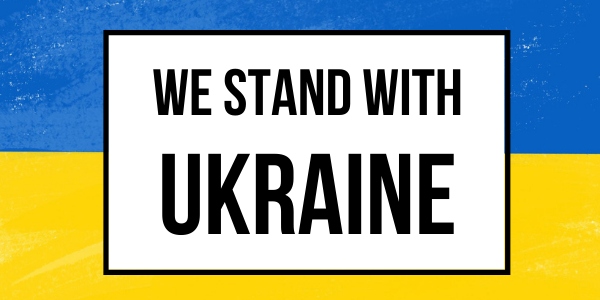Title:Top Three Tasks When Applying for a Security Clearance
Author:Thomas Braden
Date:May 2021
WHO NEEDS A SECURITY CLEARANCE?
Any person who has worked or will work for an organization that requires access to restricted information more than likely has or will need a security clearance.
The largest source of individuals with security clearances is the military population. Once this group finishes their military career, the majority pack up their uniform and security clearance to look for a civilian job. There are over 200,000 military personnel transitioning out of the service each year. These separating military members look for employment in fields such as the commercial defense-related fields where they can utilize their expert military training and technical skills. In addition, these jobs generally require background checks due to the sensitive nature of the materials the individual handles on a daily basis - this is where the former military member's clearance becomes a valuable commodity.
The importance of a security clearance does not stop with defense contractors. The information technology, medical, telecommunications, education and financial fields (to name a few) have an increasing number of jobs where company information needs to be guarded and HR managers seek out individuals with current security clearances.
WHY IS A SECURITY CLEARANCE SO VALUABLE?
Experts project that a security clearance can increase your salary anywhere from $5,000 to $17,000, and in some cases, even more. When employers do not have to invest time and money into a background check and the paperwork that goes with that, the saved money often goes back into the employee's salary. Former military personnel who have security clearances are very appealing to employers. In addition to the thorough background check that has already been completed, these employees are disciplined, dependable and have strong leadership skills - priceless attributes in today's market.
WHAT IS A SECURITY CLEARANCE?
Certain federal employees and certain employees in the private sector are required to have security clearances because their job requires them to have access to classified documents. Various other work takes place in secured facilities. The occupant of any such job is said to hold a "sensitive" position, defined as "any position, by virtue of its nature, could bring about a material adverse effect on national security". At any given time, there are about 3 million people with security clearances. In addition, there are about 1.5 million security clearances in the hands of private contracting or consulting firms. Contractors participate in what is called the industrial security program administered by the Defense Counterintelligence and Security Agency (DCSA) on behalf of the Department of Defense and 33 other federal agencies.
One out of every thirty Americans has some sort of security clearance. It has been estimated that one out of every thousand of these can be expected to compromise the secrets they are entrusted with. Some need money, some can be blackmailed, some are disgruntled and want revenge and some are just sloppy. American industry is a prime target for espionage as well as domestic terrorism and white collar crime.
A security clearance is technically a license issued by the head of a department, division or agency of the federal government. The type of security clearance that one can be approved for also depends upon the department, division, or agency involved. For classification purposes, the types of security clearances are:
- Confidential
- Secret
-
Top Secret
- Sensitive Compartmentalized Information (SCI)
- Single Scope Background Investigation (SSBI)
The Confidential security clearance is the easiest to obtain. Whereas other classifications will almost always involve a background check by the Defense Department, clearance programs for a confidential classification may be operated by the agencies themselves, like the Federal Bureau of Investigation (FBI), the Department of Energy (DoE), the Department of State, etc.
Secret (sometimes called "Ordinary Secret") and Top Secret classifications almost always have some amount of military involvement in the clearance process. These types of licenses are typically found in agencies like the CIA or NSA. One of the differences between Secret and Top Secret is how "expansive" the background check is, i.e., how far and deep the investigation goes into your dependents, friends and relatives.
SCI classifications are only cleared for a few people and the background investigation process as well as the continual monitoring is extremely intensive.
The amount of time it takes to receive a security clearance is usually between six months to one year, if all goes well. Rarely, if ever, are temporary clearances granted during the review process.
TYPES OF SECURITY CLEARANCES
The scope of investigative work needed to grant a security clearance depends on the level of clearance being requested. There are three basic levels of security classification:
-
CONFIDENTIAL
This refers to material, which, if improperly disclosed, could be reasonably expected to cause some measurable damage to the national security. The vast majority of military personnel are given this very basic level of clearance. This level needs to be reinvestigated every fifteen years.*
-
SECRET
The unauthorized disclosure of secret information could be expected to cause serious damage to the national security. This level is reinvestigated every ten years.*
-
TOP SECRET
Individuals with this clearance have access to information or material that could be expected to cause exceptionally grave damage to the national security if it was released without authorization. This level needs to be reinvestigated every five years.*
* Reinvestigations are more important than the original investigation because those individuals who have held clearances longer are more likely to be working with increasingly critical information.
ADDITIONAL SECURITY CLEARANCE TERMS
Here are some of the industry terms attached to security clearances that you may encounter
-
SCI
Sensitive Compartmented Information or SCI is a type of classified information that concerns or was derived from sensitive intelligence systems, sources of intelligence, methods, or processes
-
Public Trust
"Public Trust" and "Low Risk" or "Non-Sensitive" are not security clearances. They are national security eligibilty criteria for access to information that does not have an impact on national sercurity
-
Suitability Determination
-
Interim Clearance
Interim Clearance is a rarely granted temporary access to classified infromation while background investigation is being conducted
Suitability determination is an evaluation of individual establishing suitability to work for federal government based on character and/or conduct.
SECURITY CLEARANCE INVESTIGATION LEVELS
These levels are often combined with security clearance but they are background investigation instruments applied to establish eligibility of access to confidential information
-
Tier 3 Investigation
Type of investigation required for Secret and Confidential Security Clearance. T3 is the investigation required for positions designated as non-critical sensitive and/or requiring eligibility for "L" access or access to Confidential or Secret information
-
Tier 3R Investigation
Periodic reinvestigation for Secret (conducted every 10 years) and Condifential (conducted every 15 years) Security Clearances.
-
SSBI
SSBI or Single Scope Background Investigation is a type of security clearance investigation required for Top Secret level of clearnace and access to SCI
-
SSBI-PR
Periodic reinvestigation for Top Secret level of clearnace (conducted every 5 years)
-
Tier 5 Investigation
Introduced in 2016 and replaces SSBI Type of investigation for Top Secret Security Clearance
-
ANACI
Access National Agency Check with Written Inquiries and Credit Search. Is the lowest level of investigation that meets the requirements for an individual to occupy a Sensitive position within the DoD
-
NACLC
National Agency Check with Law Check and Credit Search. The NACLC is used as the initial investigation for contractors at the Confidential, Secret, and "L" access levels.
-
PPR
Phased Periodic Reinvestigation is an alternative to SSBI-PR (conducted every 5 years)
-
RSI
Reimbursable Suitability Investigation is a focused investigation outside of scope of other investigations
-
EBI
EBI or Extended Background Investigation
-
ESI
Enhanced Subject Interview
POLYGRAPHS
A polygraph, also referred to as a lie detector test, is a device or procedure that measures and records some human physiological indicators during questioning. There are several types of polygraph tests that are used during security clearance backgrond investigations to determine if an applicant can be trusted with sensitive information
-
CI Polygraph (CI Poly)
Counterintelligence Scope Polygraph test
-
Lyfestyle Polygraph (LS Poly or Lifestyle Poly)
Lyfestyle Polygraph test
-
Full Scope Polygraph (FS Poly)
Full Scope Polygraph test combines Counterintelligence Polygraph and Lyfestyle Polygraph tests
WHO CAN GET A SECURITY CLEARANCE?
Any person who is employed by an organization that is sending, receiving, or developing information that the government has deemed as important to National security will need to obtain a security clearance.
Currently, there are more than 500,000 background investigations pending for security clearance approval. When an individual is going through the process for clearance, it may take up to a year before a determination is made. This makes a military candidate who already has clearance even more appealing to a hiring company. If the company hires a person who will need to gain a clearance, they may wait over a year before the person is eligible to work on the project for which they were hired. This is a lot of lost time and money to a company. If they can identify a person who has the necessary clearances, such as a candidate with a military background, that person immediately becomes more valuable.
HOW DO YOU GET A SECURITY CLEARANCE?
There are three main phases to receiving a security clearance:
- The first phase is the application process. This involves verification of U.S. citizenship, fingerprinting and completion of the Personnel Security Questionnaire (SF-86).
- The second phase involves the actual investigation of your background. The background check is conducted by the Defense Counterintelligence and Security Agency (DCSA).
- The final phase is the adjudication phase. The results from the investigative phase are reviewed. The information that has been gathered is evaluated based on thirteen factors determined by the Department of Defense (DoD). Some examples of areas they consider are; allegiance to the United States, criminal and personal conduct, and substance abuse or mental disorders. Clearance is granted or denied following this evaluation process.
SECURITY CLEARANCE REQUIREMENTS
An individual cannot apply for Security Clearance. A cleared contractor or government entity must sponsor you. You either (a) must be an employee of or consultant for that cleared contractor, or (b) you've received and accepted a written offer of employment from the cleared contractor. That offer must also indicate your employment will begin within 30-days of receiving your clearance.


